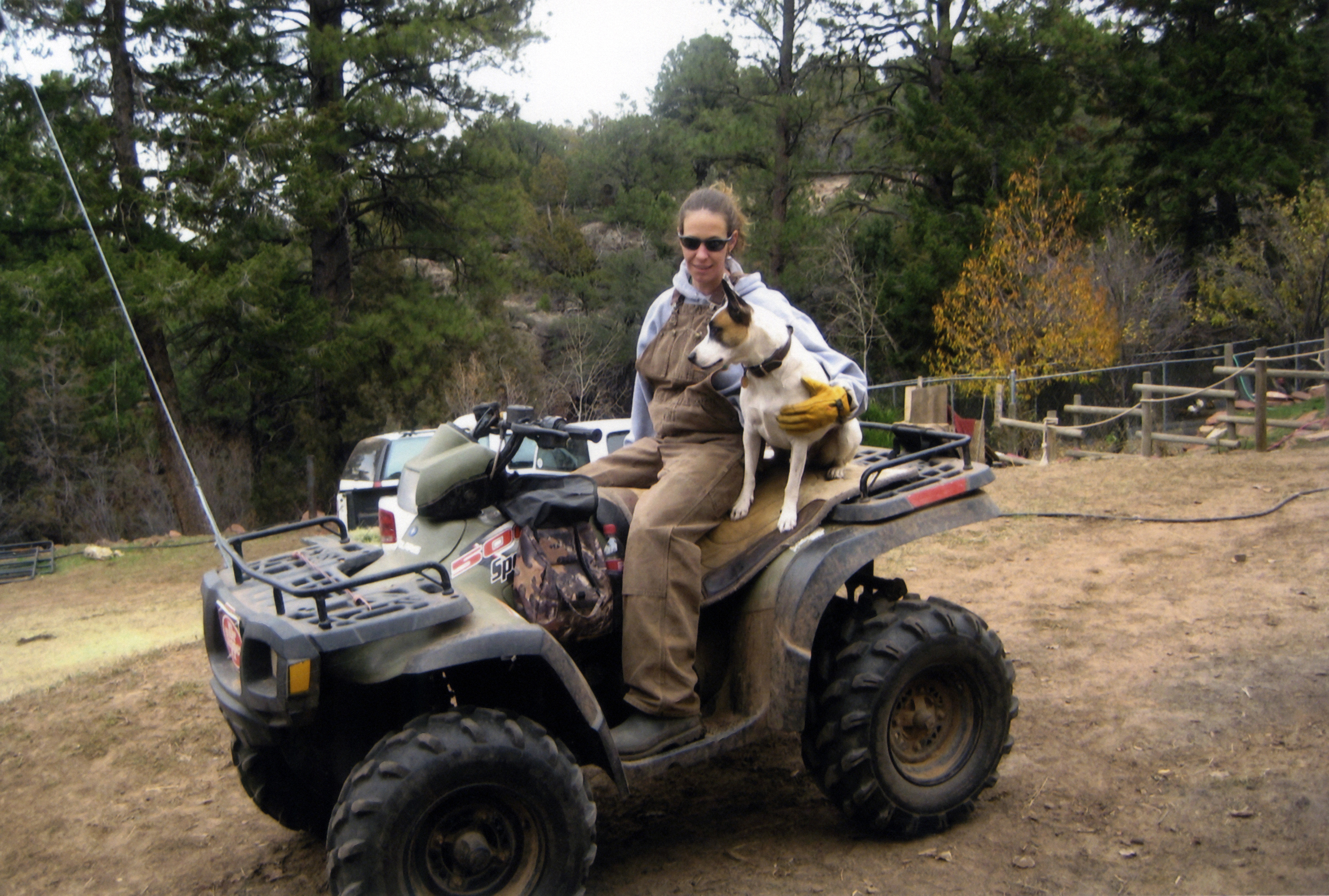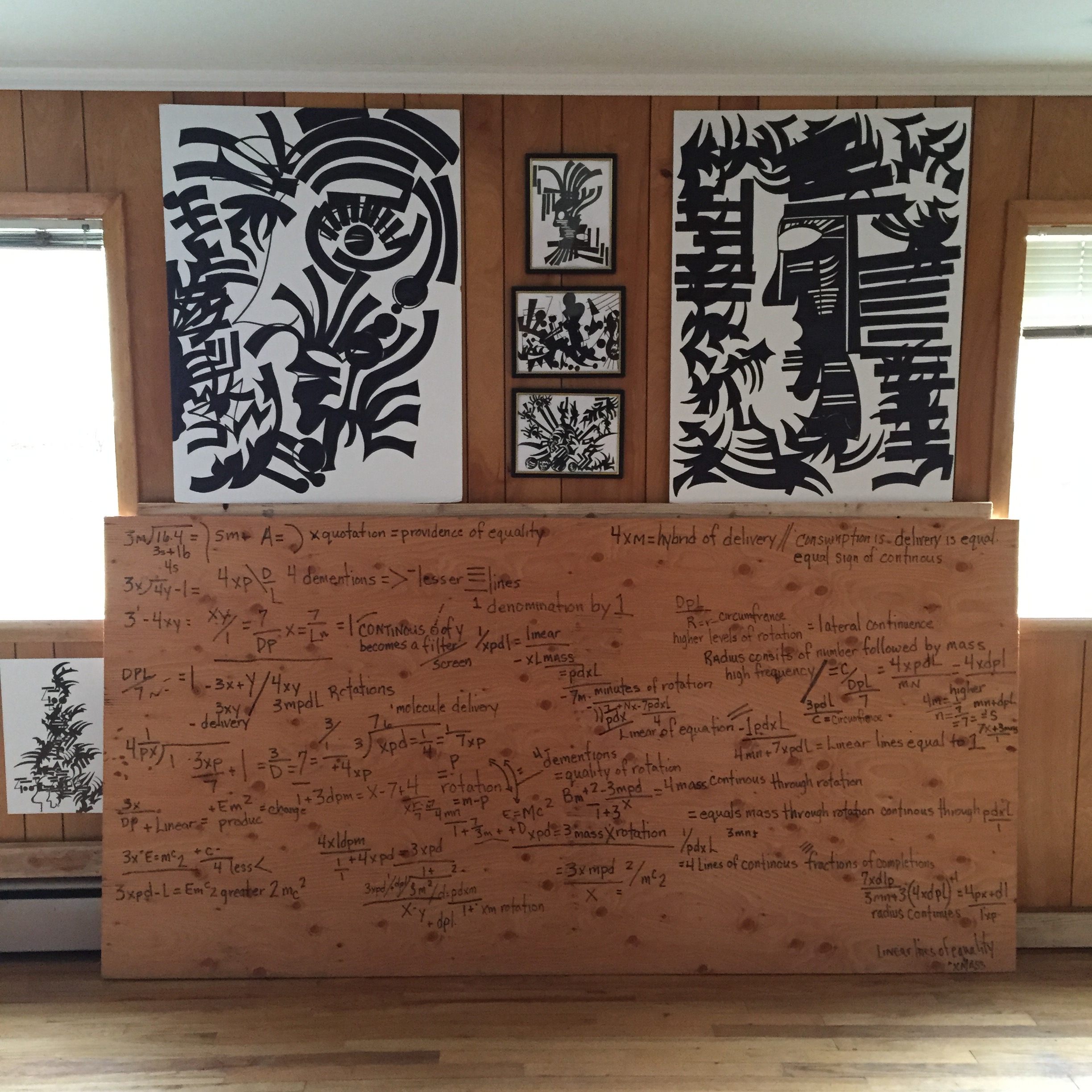Colorado Rancher Suffers Traumatic Brain Injury, Becomes Accidental Genius
Leigh Erceg, 47, doesn't remember anything about her former life.
— -- For most of her life, Leigh Erceg was an athlete who loved NASCAR, a bubbly tomboy who worked on a ranch in remote northwestern Colorado. She had boyfriends and a degree in physical education and zero interest in math or art.
A few years ago, Erceg, 47, suffered a traumatic brain injury and now she is a gifted artist and poet. She enjoys spending time puzzling over mathematical equations. She can “see” sounds and “hear” colors when she listens to music, although she is extremely sensitive to light.
She remembers nothing about her prior life. She doesn’t even recognize her own mother.
Erceg’s condition is so incredibly rare that it took numerous scientific studies and brain scans to diagnose her with what is called “savant syndrome.”
Savant Syndrome is described as vastly enhanced cognitive ability in an area such as art and math. Acquired savant syndrome is when a person isn’t born with the condition, which is the case with Erceg. She also suffers from “synesthesia,” a mixing of senses, where the person can see a sound, or hear a color as a series of numbers and letters.
“Leigh is the only woman in the world who has acquired savant syndrome and synesthesia following brain injury that I know of,” said Dr. Berit Brogaard, a neuroscientist at the University of Miami who has been studying her.

It was 2009 when Erceg, who was managing a ranch in Maybell, Colorado, said she was feeding chickens when she fell into a ravine and suffered catastrophic spine and brain injuries.
“I don’t know what type of fall it was but it must have been pretty dramatic,” she said. “I just remember them saying ‘Leigh, keep breathing.’ I remember it was a sheriff, and he said, ’Leigh keep breathing.’ There isn't pictures, there is just words, ‘Leigh keep breathing.’”
Doctors were initially unsure she would ever walk again. What no one knew at the time was that her brain suffered the most severe damage, but in a unique way.Erceg has no memory of her old life, not even her childhood. She relies on Amber Anastasio, who she has been best friends with since the fifth grade, to help her understand who she used to be.

In addition to her memories, Erceg also lost her ability to feel emotion, which doctors describe as “flat affect.” She has since learned to smile or chuckle as a response to social cues, but says she doesn’t feel or understand the reaction. She said she was initially misdiagnosed with bipolar disorder.
“Leigh was a total extrovert. She was very confident,” Anastasio said, “I just know that she is different now. It’s not a bad different. It’s just different. It’s who she is now.”
Erceg has a home now filled with mathematical equations and art -- her interpretations of how she sees the world. All of her drawings are done with headphones on, music blaring and a Sharpie in hand. When she’s drawing, Erceg said “all the dimensions of the house” run through her mind.
“At one point, all theoretical designs come in occupancy of a triangle, of a linear line, of circulations,” she said, describing one of her drawings.

The birth of these strange new talents has left Erceg lonely at times and desperate to understand what happened to her, and questioning whether what she sees in her mind is real. She went to Dr. Brit Brogaard at the University of Miami, where she underwent two days of a rigorous series of tests.
After the first test, Erceg started to understand why she draws the way she does. And the way she describes seeing sounds or hearing colors is real, Broggad said.
“Most people, if you ask them to draw a house or a car, they will start with the outline of the car or house, and they will fill in the windows and door, and the wheels,” Brogaard said. “When you ask Leigh to draw something, she will start with the details. She will start with the windows or the wheels – the details, and fill out that way. She is attending to details before she is attending to the whole.”
Erceg’s genius may be accidental, but she has embraced it – a view of the world as colors and numbers, and a beautiful mind she is just beginning to understand.




